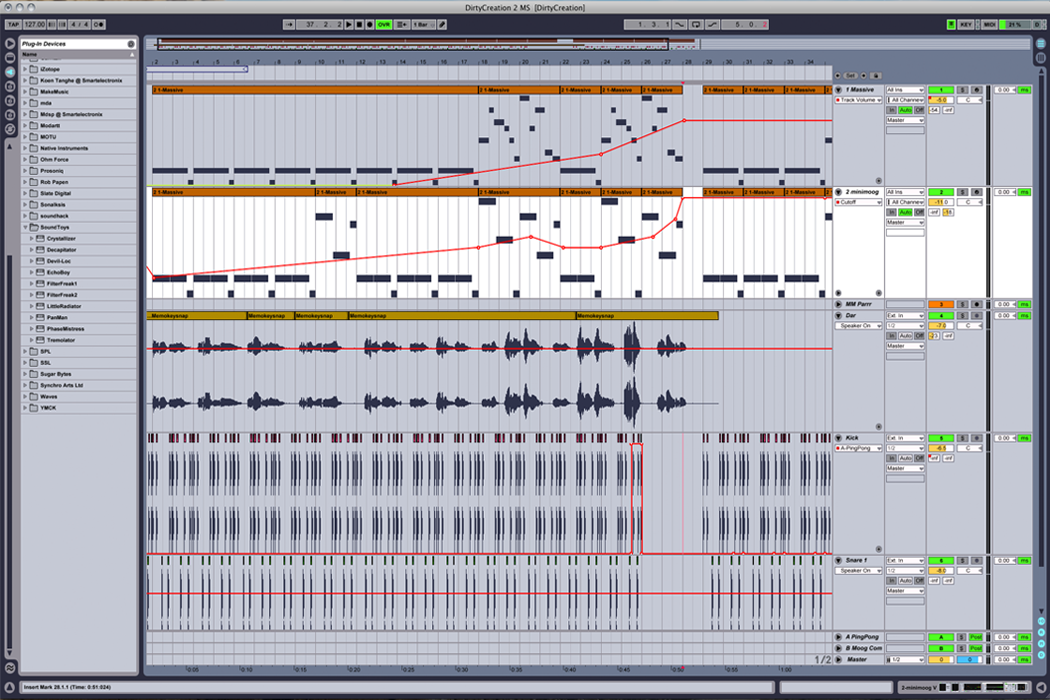To make MIDI sound realistic, utilize high-quality virtual instruments, add humanizing elements like velocity and timing variations, and incorporate expressive articulations for a more natural sound. Achieving a realistic MIDI sound is crucial for creating authentic-sounding music that resonates with the listener.
By using these three methods, you can enhance the realism of your MIDI compositions and achieve professional-sounding results. Creating realistic-sounding MIDI music can be a challenging task, but with the right techniques and attention to detail, you can elevate your compositions to a new level.
Whether you’re a composer, producer, or musician, understanding how to make MIDI sound more realistic is essential in today’s digital music landscape. We’ll explore three effective methods for achieving a lifelike sound in your MIDI productions. Whether you’re working on orchestral arrangements, electronic music, or any other genre, these techniques will help you breathe life into your MIDI performances and captivate your audience. Let’s dive in and discover how to make your MIDI sound more authentic.

Credit: www.practical-music-production.com
Unleashing The Magic Of Midi
MIDI, short for Musical Instrument Digital Interface, has revolutionized music production by providing a powerful tool for creating and manipulating musical sounds. Unleashing the magic of MIDI involves tapping into its potential to produce realistic, lifelike sound. Here, we explore the evolution of MIDI technology and the challenges faced in creating authentic sound using this versatile platform.
The Evolution Of Midi Technology
MIDI technology has come a long way since its inception in the early 1980s. The introduction of General MIDI (GM) and later, GM2, standardized the way musical instruments communicate with each other, enabling seamless compatibility between different devices. The development of Digital Audio Workstations (DAWs), such as Ableton Live and FL Studio, has further expanded MIDI’s capabilities, allowing for intricate control over every aspect of a musical composition.
Challenges In Creating Realistic Midi Sound
Despite its versatility, generating realistic sound with MIDI presents several challenges. One major hurdle is the lack of natural variability found in live performances, which can make MIDI sequences sound robotic and repetitive. Additionally, emulating the nuances of acoustic instruments, such as the subtle changes in timbre and expression, requires meticulous attention to detail and advanced programming techniques.
Credit: www.halowaypoint.com
Crafting Realism In Midi
Crafting Realism in MIDI involves implementing various techniques to enhance the musical quality and make it sound more lifelike. By utilizing these methods, your MIDI compositions can achieve a level of realism that captures the nuances and expressive characteristics of live performances. In this post, we will explore three effective ways to make MIDI sound realistic.
Utilizing Humanization Techniques
Utilizing humanization techniques consists of adding subtle variations to the timing, velocity, and subtle pitch of individual notes to mimic the idiosyncrasies of a human performance. By introducing slight deviations in the timing of notes, adjusting the velocity to emulate the dynamics of a live instrument, and incorporating small variations in pitch, you can infuse your MIDI composition with an organic, human touch.
Layering And Texturing Sounds
Layering and texturing sounds involve combining different instrument patches, using multiple MIDI channels, and incorporating effects to create a rich, complex sonic landscape. By layering different instrument sounds and textures, you can achieve a more realistic and full-bodied sound that simulates the depth and richness of an ensemble performance. Additionally, applying effects such as reverb, chorus, and delay can further enhance the authenticity of the MIDI composition.
Applying Dynamic Expression And Control
Applying dynamic expression and control encompasses the manipulation of MIDI controllers, such as modulation wheel, pitch bend, and expression pedal, to emulate the nuances of human performance. By using these controllers to modulate parameters such as volume, timbre, and pitch in real-time, you can inject a sense of expressiveness and realism into your MIDI compositions, replicating the subtleties and emotive qualities present in live performances.
Fine-tuning Midi Performances
When it comes to fine-tuning MIDI performances, there are various techniques that can enhance the realism and expressiveness of the music. By manipulating velocities and dynamics and adding expressive controllers, you can breathe life into your MIDI compositions.
Manipulating Velocities And Dynamics
Adjust velocities to reflect varying playing intensities. Vary dynamics for a more natural sound.
Adding Expressive Controllers
Utilize modulation wheels, pitch bend, and aftertouch to add nuances. Experiment with different controllers.

Credit: flypaper.soundfly.com
Frequently Asked Questions Of 3 Ways Make Midi Sound Realistic
How Do You Make Midi Sound Real?
To make MIDI sound real, use expressive MIDI techniques like adding modulation and velocity changes, humanizing the timing, and using realistic instrument samples. Pay attention to details such as note velocities, vibrato, and slight timing variations. Fine-tuning these elements will help create a more realistic MIDI sound.
How Do I Make My Midi Keyboard Sound Real?
To make your MIDI keyboard sound real: 1. Use high-quality virtual instruments and samples. 2. Add subtle dynamics and variations in your playing. 3. Utilize modulation and expression controls. 4. Apply realistic articulations and phrasing. 5. Consider adding effects like reverb and delay for more depth.
How Can We Make A Midi File Sound Good?
To make a MIDI file sound good, adjust instrument settings, use quality samples, ensure proper timing, add expression, and mix well.
What Are Three Advantages To Using Midi?
MIDI allows easy digital music creation, offers flexibility in composition, and enables effortless editing and manipulation of musical data.
Conclusion
Achieving realistic MIDI sounds is key for music production success. By implementing techniques like layering instruments, using quality samples, and adjusting velocity and timing, you can elevate your music to a professional level. Remember, attention to detail is crucial in creating authentic and engaging MIDI tracks.
Keep experimenting and refining your skills to master the art of realistic MIDI production.